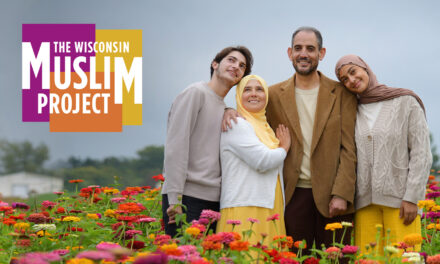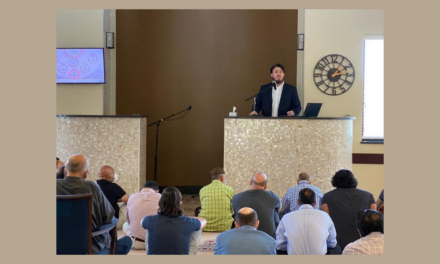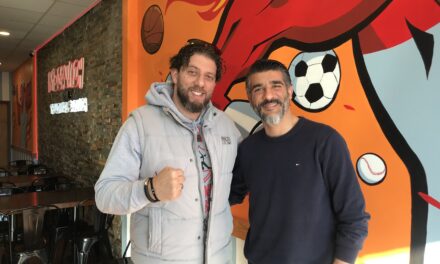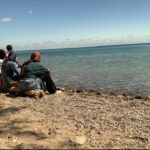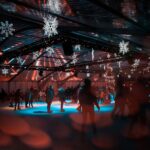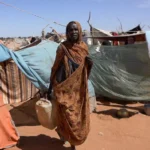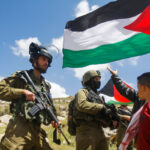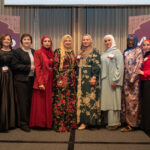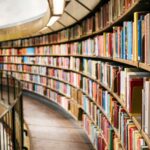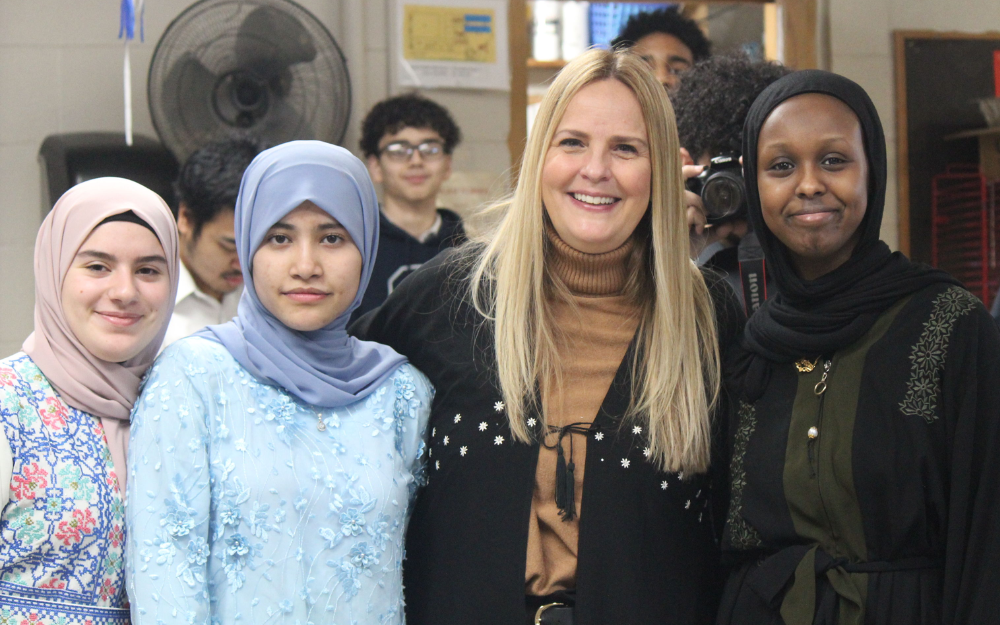
Jarnekha Abdul Naser (second from left) and Salam School art teacher Kristie Farahbakhsh (third from left) are flanked by Abdul Naser’s friends Shanaa (far left) and Anisa (far right).
Maybe it’s the depth of her life experience from an early age in a refugee family or her innate talent or her powerful desire to know and understand herself and her eagerness to communicate her feelings through art. Whatever it is, Salam School student Jarnekha Abdul Naser is “a seriously gifted artist,” said her AP Art & Design teacher Kristie Farahbakhsh. “Her works of art are painstakingly detailed and beautiful.”
During the Milwaukee Muslim Women’s Coalition’s eight-week summer art program at the Islamic Resource Center in Greenfield, the 15-year-old’s artwork caught the eye of Cherrie Hanson, Wisconsin Muslim Journal managing editor, who is also an artist. She arranged for WMJ to interview the promising young artist.
At the time, Abdul Naser was working on her summer AP homework—30 pieces of various types (landscape, portrait, typography, etc.) under a common theme. She focused on art and mental health. The COVID pandemic made mental health a big topic of discussion in school, she said. She sees neuroscience and art therapy in her future.
“I want to take my own problems and draw them out to see how I feel about them,” Abdul Naser said in an interview in August at the IRC. “I have a couple of ideas—self-love and self-identity. Since I got into high school, I have realized there are a lot of things I just don’t know about myself.”
Her theme has evolved, Farahbakhsh said in an interview in October. Lately, she’s exploring “how social media plays a role in people feeling isolated.”
In interviews with WMJ, her teacher “Ms. Kristie” discussed “Jarnekha’s exceptional talent” while Abdul Naser shared her background and her approach to exploring and expressing feelings through art.
From Myanmar to Milwaukee
When refugees flee, they leave so much behind—family, possessions, a way of life. But “they bring countless gifts to their new communities: hopes and dreams, experiences and talents, traditions and family stories, resilience and determination,” says a website about famous refugee artists created by Google in conjunction with the International Rescue Committee.
The website celebrates the works of Iraqi artist Hayv Kahraman, whose family fled Baghdad for Sweden in 1981 during the Iraq-Iran war; Frank Auerbach, who escaped Nazi oppression; Palestinian multimedia artist Mona Hatoum, Salvador Dali, Camille Pissarro (“the father of Impressionism”} and other artists who fled their homelands. Abdul Naser relates to their experiences.
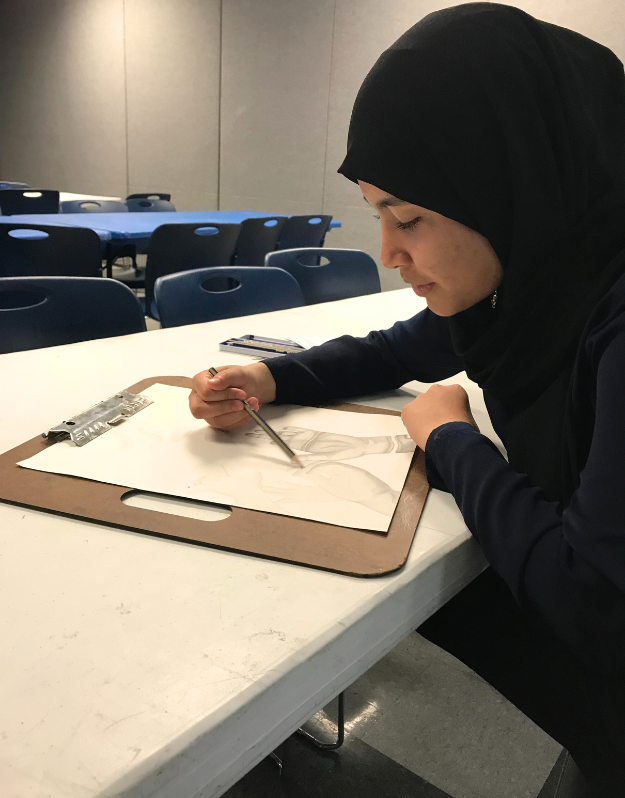
Jarnekha Abdul Naser sketches with pencil.
“You know about the Rohingya, right?” she asked during our first interview.
Rohingya, a Muslim ethnic minority in Myanmar, a Buddhist-majority country, have been oppressed for decades. They were not given citizenship or basic rights. Since the early 1990s, more than one million Rohingya fled persecution, according to the United Nations High Commission for Refugees (UNHCR).
In what the United States declared a genocide, Myanmar’s military junta unleashed a wave of violence in 2017 against the Rohingya, who fled in large numbers to surrounding countries. Some eventually resettled in other countries, including the U.S. Local Rohingya leaders estimate there are about 3,000 Rohingya living in Milwaukee. Milwaukee’s Rohingya community is said to be perhaps the largest in the U.S., according to AsiamattersforAmerica.org.
Abdul Naser’s father left Burma (Myanmar) for Malaysia around the time of her birth, she said. She heard stories later about her mother’s difficult journey on foot to Malaysia with Jarnekha and her older sister in tow.
“We were there until I was 8 or 9,” she said. “It was a long time. Then the UNCR (United Nations Commission on Refugees) helped us move.”
Do you remember Malaysia?
“Yeah. It’s pretty. I want to go back there one day, just to visit. The food was amazing.”
How did you start drawing?
“In elementary school in Texas. We had art class and would draw and do clay. I got creative with it. Teachers noticed and would say, ‘Oh, that’s pretty.’
“I’ve been doing art for a long time but I got serious in about eighth grade.”
What do you mean you “got serious?”
“That means I started doing it more and looking at it from a different perspective. I used to just do it because I was bored. One day I was drawing typography. I took a pencil and put pressure on it, put everything into it. And I felt so relieved because it showed what I felt. I saw art could express certain things.”
When did you move to Milwaukee?
“In mid-seventh grade.”
Was it hard to move?
“Yes. I left most of my friends behind. I liked the school there. I was taking high-level classes. When I moved here and went to public school, I was a bit disappointed. I wanted more of a challenge.
“Then I switched to Salam School. That was a challenge!”
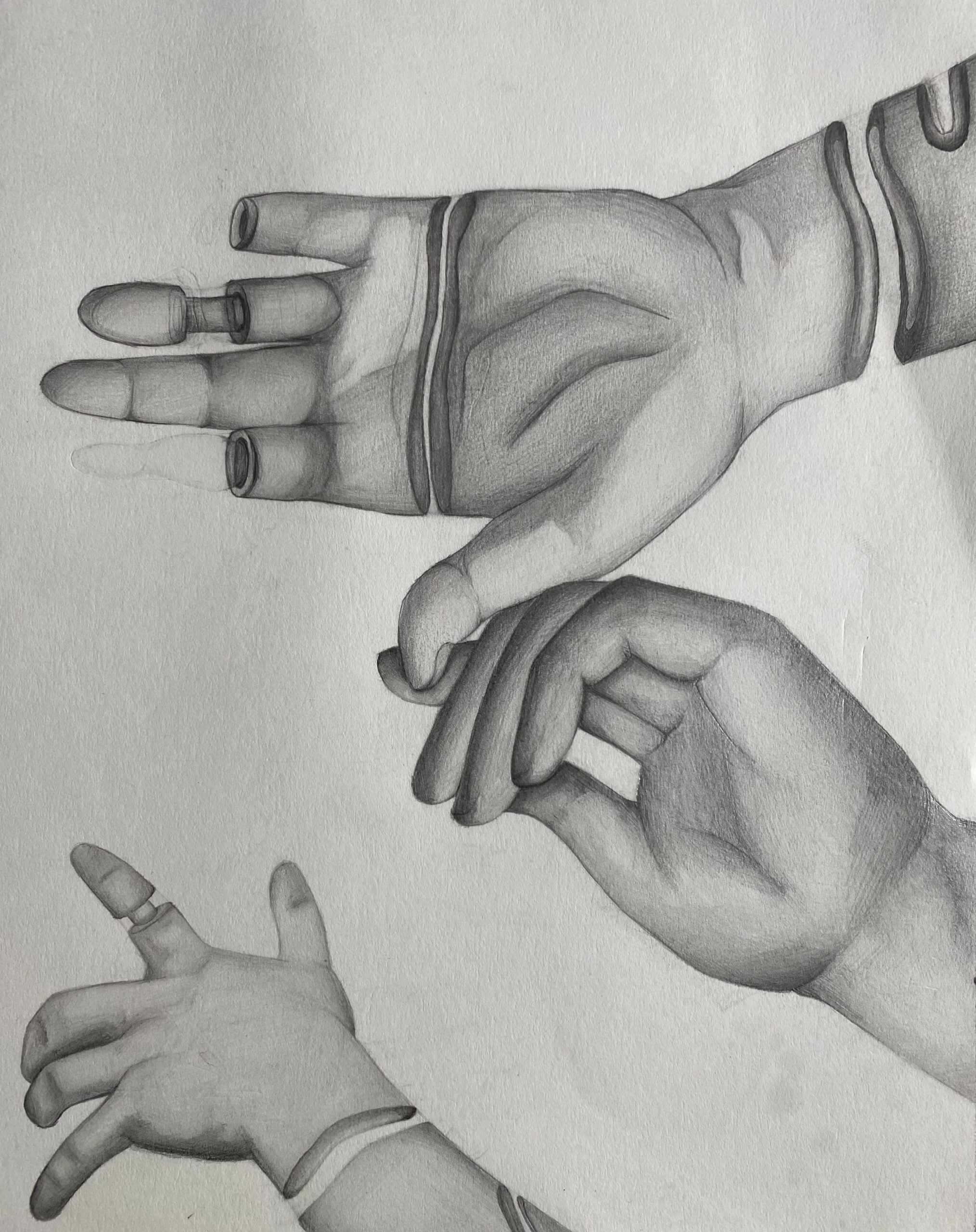
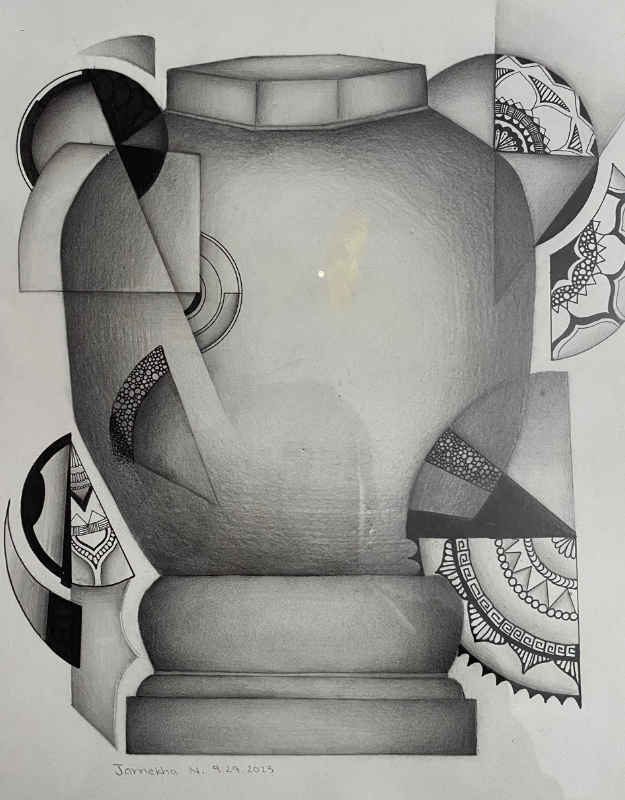
Examples of Abdul Naser’s artwork
Where are your grandparents, uncles, aunts and cousins?
“I hear stories about Palestinians having a grandpa here and a grandma there. We are like that. Uncles, aunts and cousins are all around the world.
“My dad finally got to meet his mom in July after a long time. They met in Saudi Arabia.” Of course, the whole family would like to see her, she added, but it is too expensive.
Preparing her portfolio
In Advanced Placement Art & Design at Salam School, students work on developing skills artists and designers use—investigating materials, processes and ideas; experimenting and communicating ideas about their work. Each student creates a digital portfolio of college-level work to submit to a panel of judges that scored for potential college credit.
Abdul Naser defines it as “a class where you focus on your own experiences and turn that into art.”
She developed some concepts for her portfolio while in the MMWC summer art program. It met for eight weeks on Tuesdays and Thursdays, from 11 a.m. to 2 p.m. Art-related ideas were introduced in the sessions by real artists, she said. “We did realism, storytelling and calligraphy.” Abdul Naser continued to work on them at home.
“That’s what I usually do,” she said. “I keep changing it and changing it. I do it again and again. I’m a perfectionist.”
Islamic artist Rida Fatima taught calligraphy. “She talked to me about being a perfectionist,” Abdul Naser said. “Sometimes you forget to be realistic about what you can expect from yourself. It’s like you are your own strongest supporter and strongest hater.
“(Fatima) showed me how to do the letters and just get started. I didn’t want to start. I was so scared. She’s like, ‘You’re fine. We’re just practicing.’”
In July, Abdul Naser “started really getting into” her AP summer homework, she said. “If I start something, I take my whole time doing it. I’ll focus and my whole attention goes to it.”
One piece she created was of her own face, “but I don’t think it reflected me. I don’t think I was really honest with myself when I was doing it. Your emotions play into your eyebrows. I did a simple resting face and I know that I’m not really resting. So, I was kind of lying to myself when I did it.”
Such deep introspection may be one of the qualities that make Abdul Naser’s work stand out.
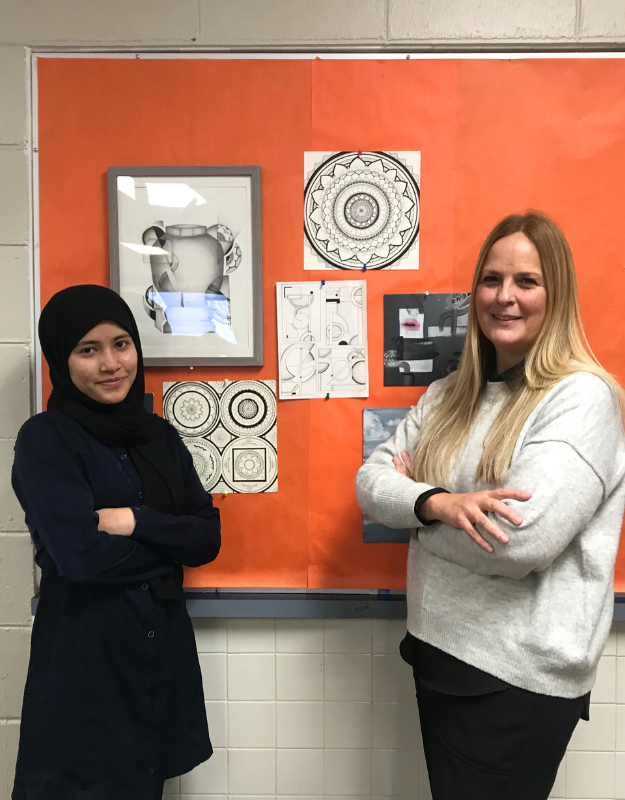
Her teacher at Salam School, Kristie Farahbakhsh, called her “my top student.” All students in AP Art demonstrate commitment and skill, creating 30 work samples over the summer in order to be enrolled in the class. Yet, Jarnekha “is naturally talented,” she said. “She is sometimes very insecure about her work, where if I were to turn something like that in, I’d be beaming with pride.”
Her radial designs are particularly stunning, Farahbakhsh said. “I introduced the project last year, teaching them how to draw Islamic tiles using compasses, then painting them. That got her started on these interesting designs she does.”
Her perseverance is exceptional, she added. “It’s hard to produce art to forced deadlines. She’s pulled through, been hard working, submitting projects and involving me in discussions about some of her pieces.
“What makes Jarnekha a good fit for this AP art class is that she is one of those people who like to do art on her own time. Whether she’s in a class or not, she would be working on her art.”
Exploring and expressing feelings
Abdul Naser described art as both a way to learn about oneself and a means to communicate. “Sometimes it helps me figure out how I feel but other times, I’m still confused,” she said. “Nevertheless, I like taking it out in my art.”
She was working on a piece in pencil when the lead fell out and created “a black mess. So, I took my hand and started rubbing it aggressively. It made an image that looked really dark. I liked it. Sometimes, I feel dark. I feel alone. I like when you can connect (your art) with how you feel.”
She likes typography because “it is organized and professional. And sometimes I feel like that is who I am. I like having a system where I’m very organized with some of the things I do. Other times, I’m just a mess.”
Her interest in systems fits well with her interest in science. “I’m a science person,” she said. “I want to major in neuroscience in college.”
She appreciates her parents who “let me do what I want. They just want the best for me. My dad tells me, ‘Just make sure whatever you are getting into is good for you.’ That’s his approach with her older sister as well, she added. And will probably be with the younger three siblings, too.
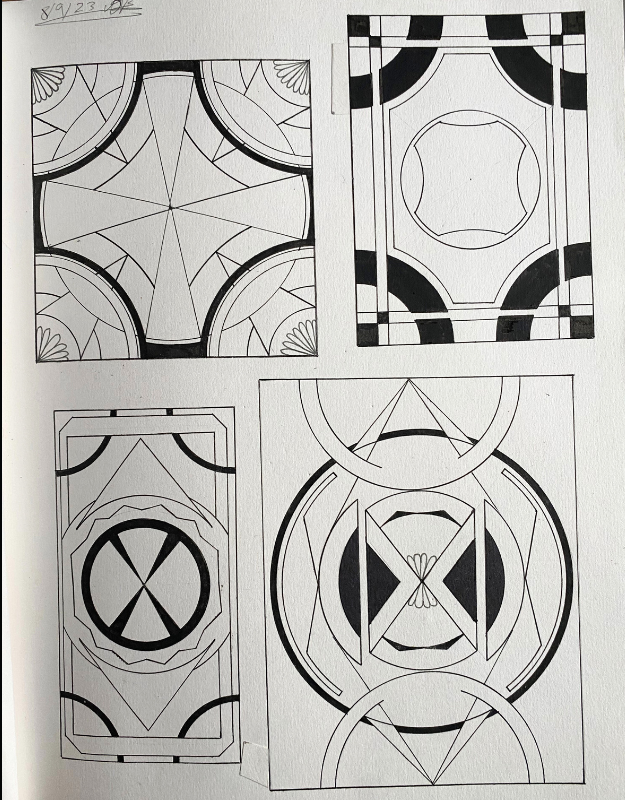
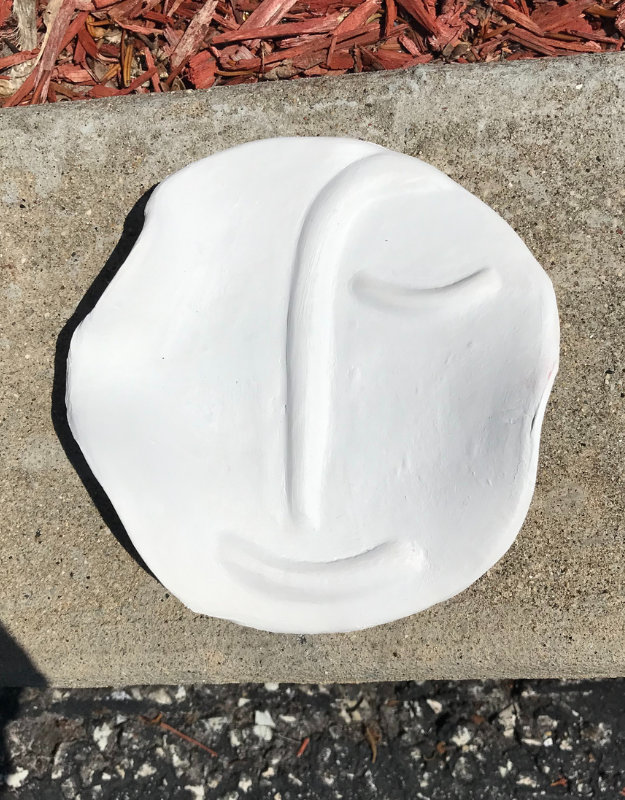
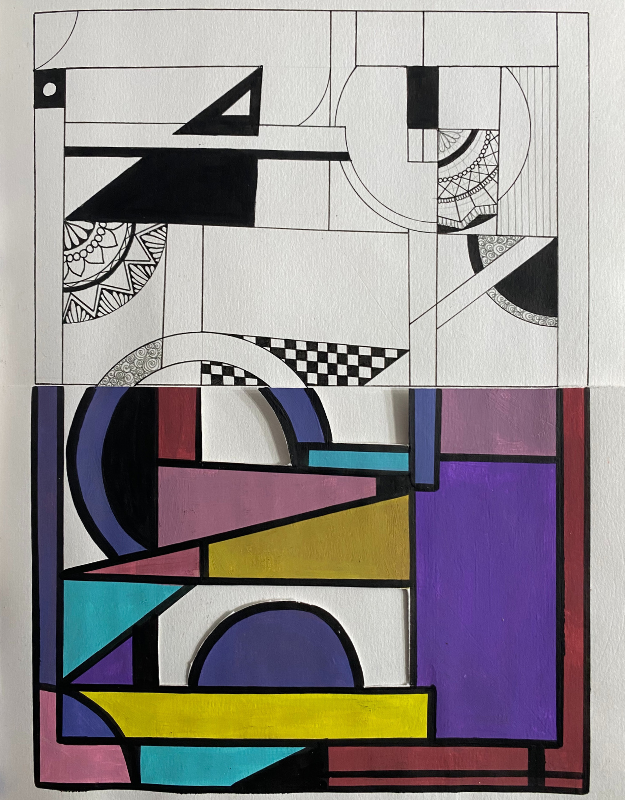
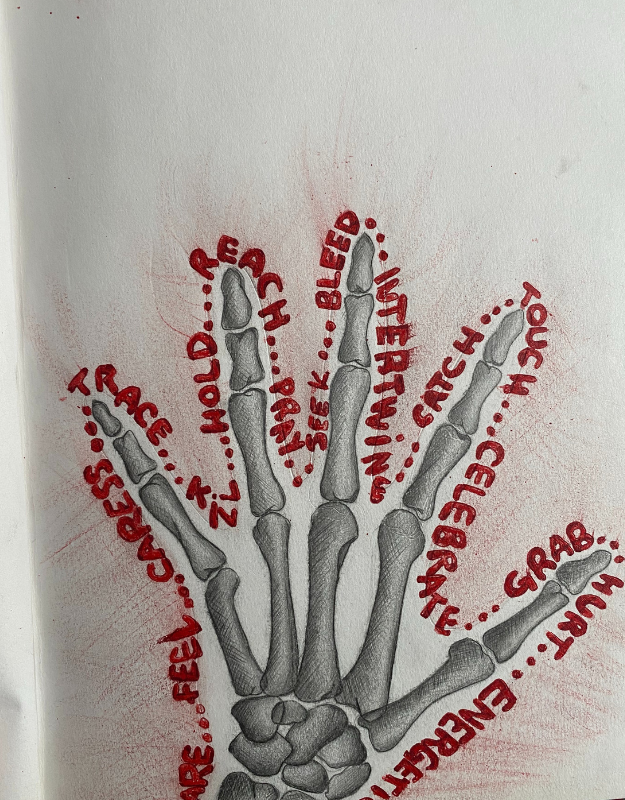
Abdul Naser enjoys opportunities in AP art class to see other students’ work and talk about what it means, she said. “That makes this class special.” A classmate did a piece with a girl falling and lips drawn all around. It made Abdul Naser think of how others are talking about you when you fall.
Her friend drew a skeleton with the skin coming off. “I think it had to do with being comfortable in your own skin,” she said.
She has recently joined the Photography Club and her teacher “Ms. Kristie” is the advisor. “It’s something I like a lot. You can control certain elements like the lighting and shadows.”
Abdul Naser aspires to be a psychiatrist who incorporates art into therapy, she said.
Or she may do art on the side.
“With her type of talent, she will have a bright future in the art world,” Farahbakhsh said.
